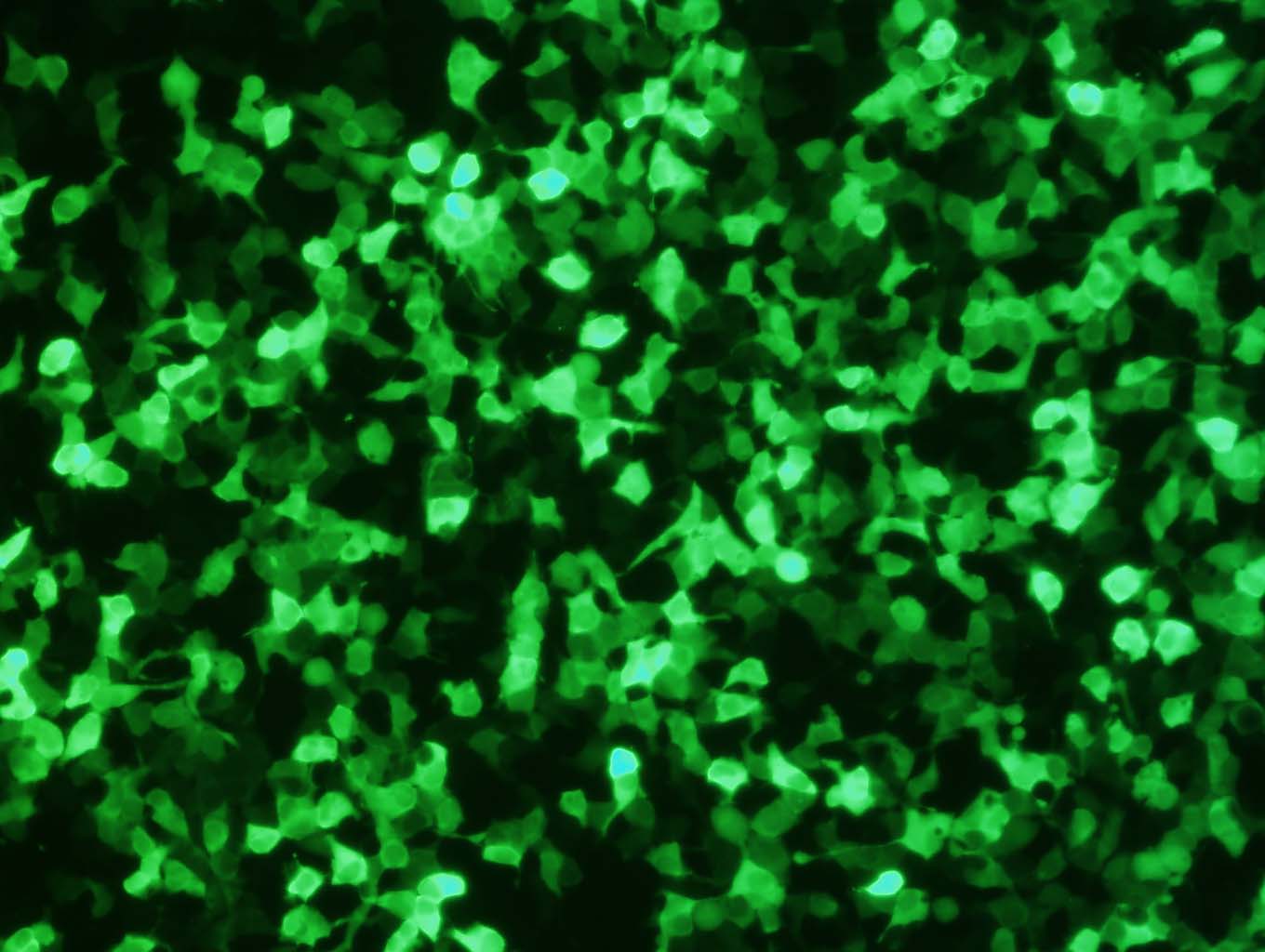Description
Cells to transfect:
Cell line name: OCCM-30, OCCM
Cementum, a mineralized tissue lining the surface of the tooth root, is required for formation of a functional periodontal ligament attachment during development. Additionally, during regeneration of tissues after disease, cementum is thought to play a critical role in the reparative process.
Cementoblasts play a central role in periodontal development and regeneration, and in particular the formation of root cementum. Cementoblasts were first isolated from OC-TAG transfenic mice in Martha Somerman lab in University of Michigan, Ann Arbor. These mice contain a construct that employed the SV-40 T antigen under the direction of the osteocalcin (OCN) promoter. In this situation, when cells are isolated from the tooth root surface of OC-TAG mice, only those cells that express osteocalcin (i.e., cementoblasts) are capable of surviving serial passages in vitro. The immortalized cementoblasts obtained in this manner were subcloned, and one clone was designated as OCCM-30. These cells were shown to exhibit the same properties as comparable cells found in vivo, i.e., they expressed high levels of cementum-associated markers, such as BSP and OCN, and promoted biomineralization in vitro and in vivo.
Transfection reagent features:
- Broad spectrum for the transfection of large plasmid, mRNA, siRNA, and/or other type of nucleic acids, which is best for co-transfection of different type and/or size of nucleic acids.
- Unique formulation-maximize transfection performance in Cementoblasts (OCCM-30 cells). More than 90% transfection efficiency as indicated by GFP positive cells in flowcytometry analsis.
- Extremely gentle to cells
- Much less reagent needed for each transfection: 0.5 ml is able to transfect about 1000 wells of 24-well plate
- Deliver single or multiple plasmids
- Simplest and straightforward protocols
- Compatible with serum
- Compatible with transfection in any plate formats
- Economical: High efficiency means less amount of nucleic acid & reagent is needed
Data
 FIG. 1. High throughput test of transfection efficiency (determined as RLU/mg) on Cementoblasts (OCCM-30 cells) after transfection of luciferase reporter gene by using our 172 proprietary transfection formulas and several most popular commercial transfection reagents. The yellow box showed the results of 4 commercial transfection reagents. The red lines marked our candidate formulas with the highest transfection efficiency for Cementoblasts (OCCM-30 cells). This test result was confirmed with repeat experiments. The one that showed the optimal balance of potency & low cytotoxicity among those candidate formulas after flow cytometry analysis on the percentage of 7AAD positive cells was later named as this A-375 Cell Avalanche Transfection Reagent.
FIG. 1. High throughput test of transfection efficiency (determined as RLU/mg) on Cementoblasts (OCCM-30 cells) after transfection of luciferase reporter gene by using our 172 proprietary transfection formulas and several most popular commercial transfection reagents. The yellow box showed the results of 4 commercial transfection reagents. The red lines marked our candidate formulas with the highest transfection efficiency for Cementoblasts (OCCM-30 cells). This test result was confirmed with repeat experiments. The one that showed the optimal balance of potency & low cytotoxicity among those candidate formulas after flow cytometry analysis on the percentage of 7AAD positive cells was later named as this A-375 Cell Avalanche Transfection Reagent.
 FIG. 2. OCCM-30 cells were transfected with GFP vector (pEGFP-N3) by using OCCM-30 Cell Avalanche® Transfection Reagent. The cells were visualized by Nikon Eclipse Fluorescence microscope 24 hours post transfection.
FIG. 2. OCCM-30 cells were transfected with GFP vector (pEGFP-N3) by using OCCM-30 Cell Avalanche® Transfection Reagent. The cells were visualized by Nikon Eclipse Fluorescence microscope 24 hours post transfection.
For Other Cells
Cementoblast (OCCM-30 cell) Avalanche® Transfection Reagent can also be used on the following cells with high transfection efficiencies.
Caki-1 Cell
MDCK Cell
Vero Cell
293 Cell
293T/17 Cell
Recommended protocols for these cells will be provided with the reagent. The protocols usually provide satisfactory transfection efficiency with invisible cytotoxicity. However, optimization may be needed for certain type of cells. Optimizations may include: the amount of DNA and this transfection reagent; cell density; transfection reagent/DNA ratio, or incubation time for the mixture of transfection reagent/DNA etc. For best transfection result, we recommend using the respective cell type/cell line specific Avalanche transfection reagents. Those reagents have been optimized on both recipes and protocols, and have been proved to have the best transfection results for the respective cell lines or primary cells. You can easily find the respective Avalanche transfection reagents specific for your cells by using the filters of our product list.
Additional Information
| Weight | 0.5 lbs |
|---|---|
| Adherence Phenotype | Adherent |
| Cell Type | Cementoblast |
| Disease | Healthy |
| Names starting from | C |
| Primary/Cell Line | Cell Line |
| Product Sizes | 0.5 ml, 1.5 ml |
| Species | Mouse |
| Tissue Sources | Tooth |
| Subcategories | Cell Type/Cell Line Specific |
Documents
Protocols
MSDS
Citations or Feedback
- Zhang, Y. Y., Huang, Y. P., Zhao, H. X., Zhang, T., Chen, F., & Liu, Y. (2017). Cementogenesis is inhibited under a mechanical static compressive force via Piezo1. Angle Orthod, 87(4), 618-624. doi:10.2319/110616-799.1
- Zhang, Y. Y., Zhao, H. X., Chen, Z. B., Lin, J. X., & Liu, Y. (2016). Osteoprotegerin Promotes Cementoblastic Activity of Murine Cementoblast Cell Line in vitro. Chin J Dent Res, 19(2), 103-108. doi:10.3290/j.cjdr.a36180
- Zhao, H., Qin, X., Zhang, Q., Zhang, X., Lin, J., Ting, K., & Chen, F. (2018). Nell-1-DeltaE, a novel transcript of Nell-1, inhibits cell migration by interacting with enolase-1. J Cell Biochem, 119(7), 5725-5733. doi:10.1002/jcb.26756


